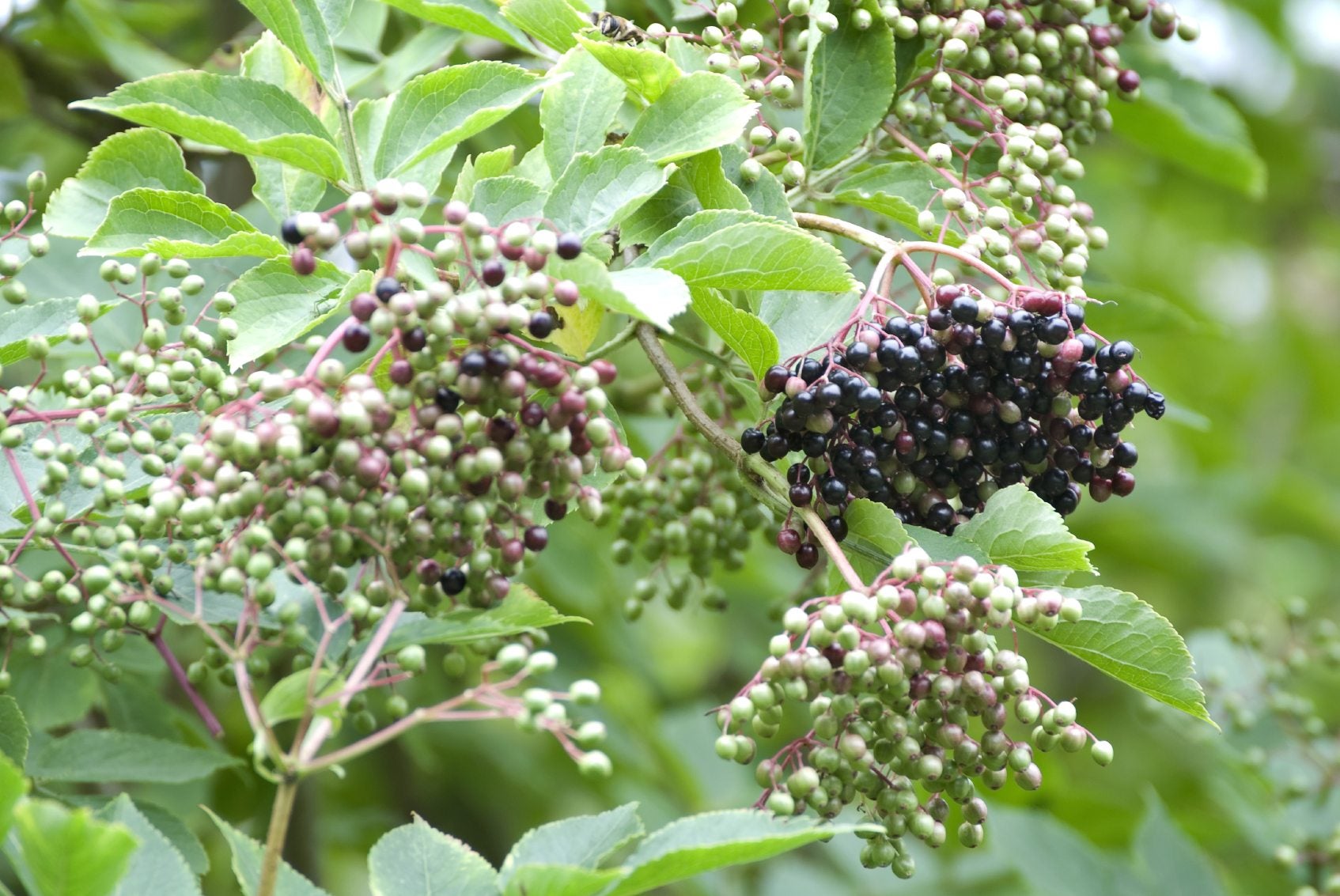Elderberry Fertilizer Info: When And How To Fertilize Elderberry Plants

The American elder (Sambucus canadensis) is most often grown for its unusual tasting berries, too astringent to eat raw but delicious in pies, jellies, jams and, on occasion, even made into wine. This shrub, indigenous to North America, is fairly easy to grow, but an application of fertilizer for elderberry will help ensure the best fruit set. So how and when is the best time to fertilize elderberry? Read on to fine out.
Elderberry Fertilizer Info
While elderberries are generally grown for the tasty berry, they are weather hardy (to USDA plant hardiness zone 4) and have aromatic flower clusters which render the plant suitable to grow as an ornamental. Fertilizing elderberries will ensure a healthy shrub and plump, abundant berry production. The berries are rich in vitamin C and contain more phosphorus and potassium than any other temperate fruit crop. As with most fruiting plants, elderberries need well-drained soil with a pH between 5.5 and 6.5. Their root system is shallow, so cultivation should be the same. It takes the shrub three to four years to come into full production, with maturation in late August to early September.
How to Fertilize Elderberry
Elderberries are tolerant of a wide range of soil types but thrive in moist, fertile, well-drained soil. Incorporating some manure or compost into the soil before planting the shrub is the first step in fertilizer for elderberry. Plant in the spring, spacing 6-10 feet (1.8 to 3 m.) apart and keep them well watered for the first season. The best time to fertilize elderberries is in early spring each year. Apply 1/8 pound (56.5 gm) of ammonium nitrate for each year of the shrub's age -- up to one pound (453 gm) per plant. Other elderberry fertilizer info indicates that an application of 10-10-10 may be applied instead. Apply a half a pound of 10-10-10 for each year of the shrub's age -- up to 4 pounds (1.8 kg.) of 10-10-10. Fertilizing elderberries in this manner will help to ensure a bumper crop of berries later in the year. Keep the area surrounding the elderberries clear of weeds, but be gentle. The roots of the elderberry are easily disturbed due to the shallow root system. Pruning is important as the shrub develops fruit on the tips of the second year canes with good lateral development. Older canes tend to lose vigor and production, so it is best to prune them out when dormant in late winter to early spring.
Sign up for the Gardening Know How newsletter today and receive a free copy of our e-book "How to Grow Delicious Tomatoes".

Amy Grant has been gardening for 30 years and writing for 15. A professional chef and caterer, Amy's area of expertise is culinary gardening.
